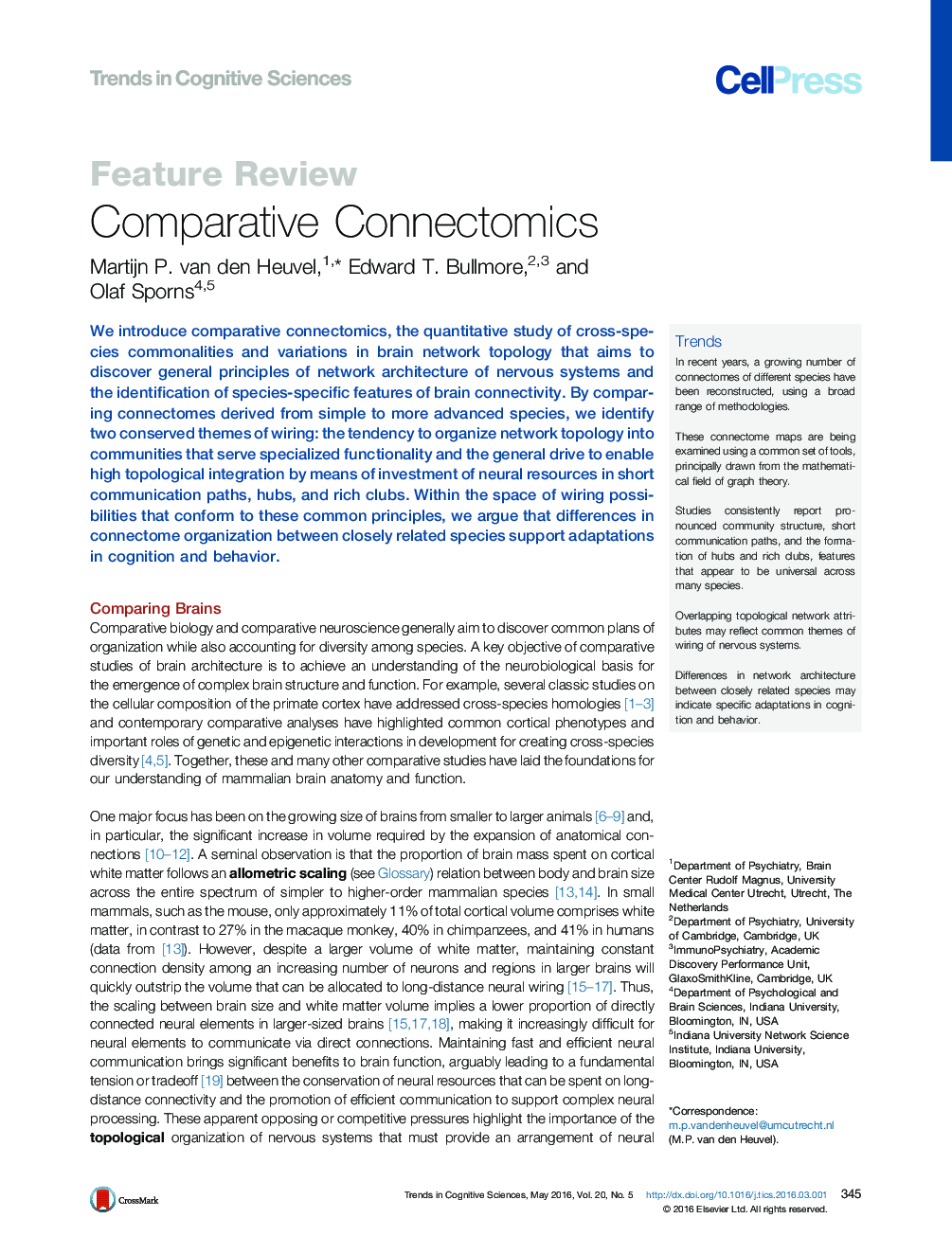| Article ID | Journal | Published Year | Pages | File Type |
|---|---|---|---|---|
| 141343 | Trends in Cognitive Sciences | 2016 | 17 Pages |
We introduce comparative connectomics, the quantitative study of cross-species commonalities and variations in brain network topology that aims to discover general principles of network architecture of nervous systems and the identification of species-specific features of brain connectivity. By comparing connectomes derived from simple to more advanced species, we identify two conserved themes of wiring: the tendency to organize network topology into communities that serve specialized functionality and the general drive to enable high topological integration by means of investment of neural resources in short communication paths, hubs, and rich clubs. Within the space of wiring possibilities that conform to these common principles, we argue that differences in connectome organization between closely related species support adaptations in cognition and behavior.
TrendsIn recent years, a growing number of connectomes of different species have been reconstructed, using a broad range of methodologies.These connectome maps are being examined using a common set of tools, principally drawn from the mathematical field of graph theory.Studies consistently report pronounced community structure, short communication paths, and the formation of hubs and rich clubs, features that appear to be universal across many species.Overlapping topological network attributes may reflect common themes of wiring of nervous systems.Differences in network architecture between closely related species may indicate specific adaptations in cognition and behavior.
